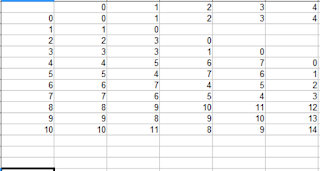Bitwise Xor is defined as you look at the two numbers say (0010 and 1011) and a new number is formed that has a 1 in position i if the ith digit of either of the two starting numbers is 1 but not both. So for 0010 and 1011 XOR would give 1001.
There are 16 of these basic bitwise logical functions, another one is AND which gives a 1 in each position if both of the starting numbers have a 1 in that position.
I'll also define one more the bitshift which takes say L(111) and produces 1110 which is just the original number with a 0 added onto the end.
From these 3 basic operations we can define addition as the program:
add(A,B):
t = XOR(A,B)
u = L(AND(A,B))
if u not equal to 0:
add(t, u)
else:
return t
For example adding these:
A=111 B=101
t=010
u=1010
where t is XOR(A,B) and u is AND(A,B) but shifted 1 position to the left. Then add is called on this t and u, to get:
t=1000
u=0100
then since u is still not 0 add is called again:
t = 1100
u=0000
now u is 0 so the program is done and returns t which is 1100. Note that 111+101 = 1100 is 7+5=12.


No comments:
Post a Comment